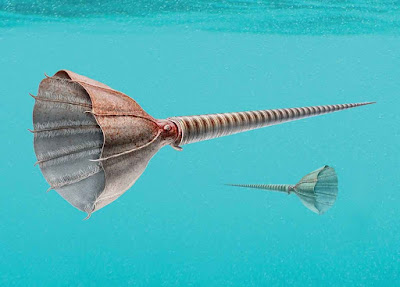[Most Recent Entries] [Calendar View]
Monday, July 2nd, 2018
| Time | Event | ||||
| 6:53a | [Botany • 2018] Nine New Species of Hymenasplenium (Aspleniaceae) from Asia
Abstract Nine new species of Hymenasplenium (Aspleniaceae) from Asia are here described based on both morphology and our recent molecular phylogenetics of the genus. Of the nine new species, H. chingii, H. denticulatum, H. sinense, H. speluncicola, and H. wangpeishanii are from southern China, whereas H. distans, H. ngheanense, H. phamhoanghoi, and H. quangnamense are from Vietnam. These new species are morphologically similar to but distinguishable from those of the H. unilaterale s.l. group (H. apogamum, H. hondoense, and H. murakami-hatanakae). All except one new species were included in a recent phylogenetic analysis and were well supported as distinct lineages based on molecular data. All new species are illustrated and the information on their distributions, habitats, and major distinguishing characters is provided. Keywords: Guangxi, Guizhou, limestone caves, Vietnam, Yunnan Ke-Wang Xu, Liang Zhang, Ngan Thi Lu, Xin-Mao Zhou, Hai He, Thien Tam Luong, Ralf Knapp, Wen-Bo Liao and Li-Bing Zhang. 2018. Nine New Species of Hymenasplenium (Aspleniaceae) from Asia. Phytotaxa. 358(1); 1–25. DOI: 10.11646/phytotaxa.358.1.1 | ||||
| 9:09a | [Paleontology • 2018] Endocerids: Suspension Feeding Nautiloids?
ABSTRACT For a long time all extinct cephalopods of the subclass Nautiloidea were considered as ecological analogues of the Recent Nautilus. Recently this view has been rejected: it is now known that among the nautiloids there were not only demersal predators but also epipelagic animals whose life-style and reproduction differed from those of the Nautilus. However, the habits of some nautiloid orders is still poorly understood. One of the most enigmatic cephalopods is the Early Paleozoic nautiloid order Endocerida. Endocerids differ from other nautiloids: they reached gigantic sizes (up to 9 meters), had a wide siphuncle tube and were widespread and numerous during the Ordovician. Since they were an important component of many Ordovician ecosystems, without the understanding of their habits and feeding strategies a correct reconstruction of these ecosystems is impossible. Until now, endocerids have been considered as dominant apex predators, however, this assumption is based on an analogy with the Nautilus mode of life, while the features of the structure of endocerid shells do not confirm this idea and furthermore contradict it. In this article, a new hypothesis is proposed and debated: according to it, the endocerids were planktotrophic cephalopods and the largest of them were giant suspension feeders. KEYWORDS: Ordovician, Nautiloidea, Endocerida, suspension-feeding, plankton Aleksandr A. Mironenko. 2018. Endocerids: Suspension Feeding Nautiloids? Historical Biology: An International Journal of Paleobiology. DOI: 10.1080/08912963.2018.1491565 Missed It? | Full list of the 85 paleontological papers published this week go.shr.lc/2lKrKKr via @Paleowire | ||||
| 1:28p | [Paleontology • 2018] Reanalysis of the Phylogenetic Status of Nipponosaurus sachalinensis (Ornithopoda: Dinosauria) from the Late Cretaceous of Southern Sakhalin Abstract Nipponosaurus sachalinensis is the only definitive lambeosaurine hadrosaurid from Sakhalin Island of Russia. Previous studies suggested it was a member of Lambeosaurini (derived lambeosaurines). However, its phylogenetic status within Lambeosaurini remains controversial. In addition, some studies argued the juvenile ontogenetic stage of the holotype and regarded Nipponosaurus as an invalid taxon. In order to solve these problems, its definite growth stage is determined through histological studies. Absence of a line of arrested growth, presence of osteons with large vascular spaces, and presence of primary bone remnants even in the highly modified regions of the femur confirm that the holotype was a juvenile. More than a hundred of the 350 characters used to determine the phylogenetic position of Nipponosaurus are ontogenetically variable characters based on the different ontogenetic stages of Hypacrosaurus stebingeri. Our phylogenetic analysis reveals that Nipponosaurus is a basal lambeosaurine hadrosaurid, much further down in the tree than previously suggested, and shows a polytomy with Blasisaurus and Arenyisaurus. This study also indicates that Nipponosaurus is a valid taxon because it possesses unique characters within the Lambeosaurinae (presence of massive surangular anterodorsal process, presence of lateral shelf of the dentary, and a relatively short ulna), which are independent of ontogeny. Keywords: Dinosaur, Ornithopoda, Hadrosauridae, Nipponosaurus, ontogeny, histology
Conclusions: Histological observations provide the first direct evidence that Nipponosaurus is an immature specimen. By comparing different ontogenetic stages of H. stebingeri and reviewing previous studies, up to 102 characters previously used in phylogenetic analyses are considered ontogenetically controlled within Hadrosauridae. Our phylogenetic analysis positions Nipponosaurus within a monophyletic clade of Arenysaurus and Blasisaurus, which has a sister clade relationship with the clade comprised of Parasaurolophini and Lambeosaurini. This newly recovered phylogenetic position supports a strong affinity of Asian and European lambeosaurids. The resulting relationships of this genus suggest that this taxon is valid, and represents one of the few hadrosaur specimens in Far East Asia.Ryuji Takasaki, Kentaro Chiba, Yoshitsugu Kobayashi, Philip J. Currie and Anthony R. Fiorillo. 2018. Reanalysis of the Phylogenetic Status of Nipponosaurus sachalinensis (Ornithopoda: Dinosauria) from the Late Cretaceous of Southern Sakhalin. Historical Biology: An International Journal of Paleobiology. 5; 694-711. DOI: 10.1080/08912963.2017.1317766 ニッポノサウルスの孤独 - GET AWAY TRIKE ! - Yahoo!ブログ blogs.yahoo.co.jp/rboz_05/35175912.html #ブログ #その他自然科学 #鳥脚類 【動画】NスペPlus 7200万年前の巨大恐竜“むかわ竜”がよみがえる! - 世界でも珍しい全身骨格化石を手がかりに、“むかわ竜”の姿をよみがえらせました。 Unraveling the mysteries of Nipponosaurus phys.org/news/2017-06-unraveling-mysteri Duck-Billed Dinosaur Is Japan’s Largest Complete Fossil asianscientist.com/2017/06/in-the-lab/la |
| << Previous Day |
2018/07/02 [Calendar] |
Next Day >> |











